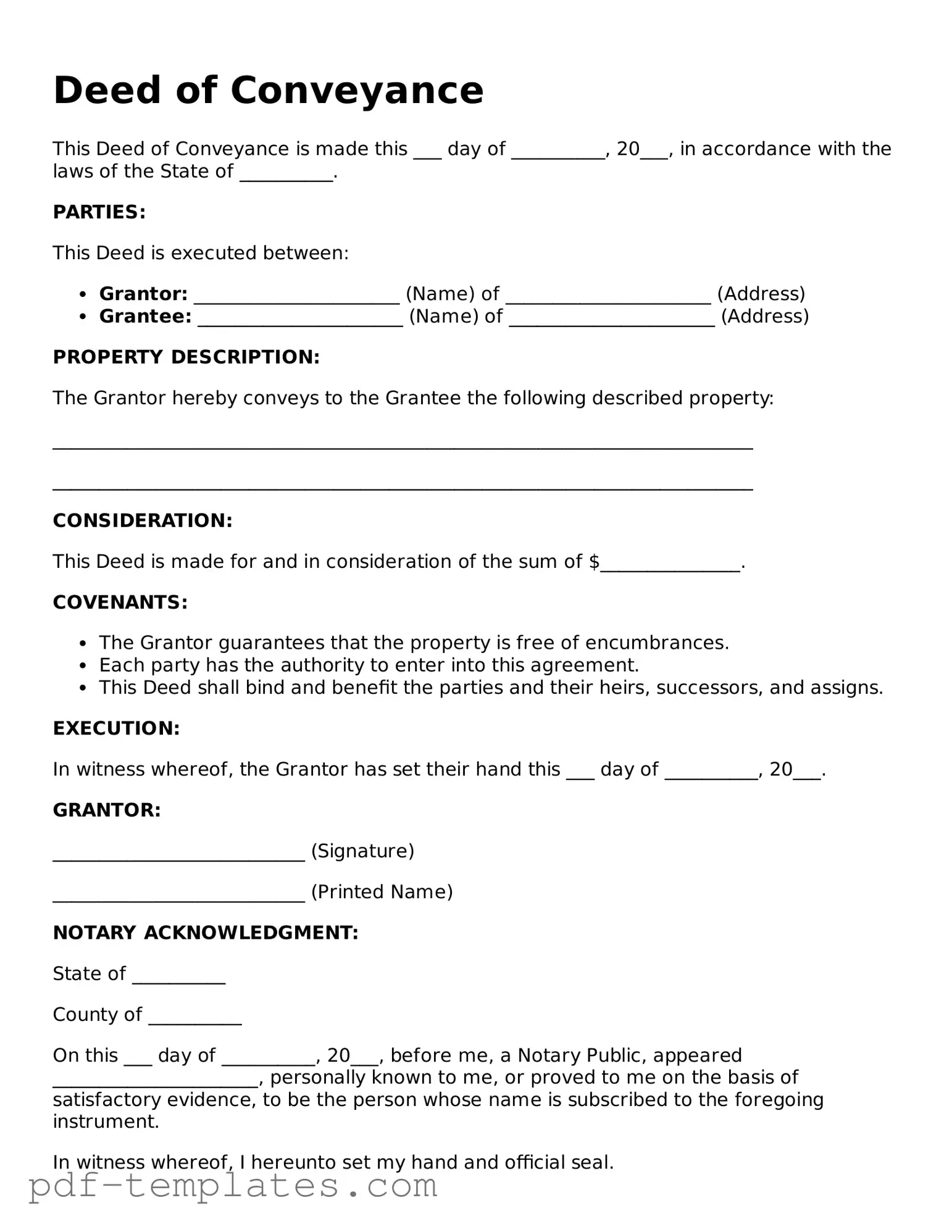The Deed form plays a crucial role in various legal transactions, serving as a written document that formalizes agreements between parties. It can pertain to the transfer of property, the establishment of trusts, or the conveyance of rights. Understanding its components is essential for anyone involved in real estate or estate planning. Typically, a Deed includes essential details such as the names of the parties involved, a clear description of the property or rights being transferred, and the signatures of the parties. Additionally, it may require notarization to enhance its legal validity. Various types of Deeds exist, including Warranty Deeds, Quitclaim Deeds, and Special Purpose Deeds, each serving specific purposes and offering different levels of protection to the parties. Clarity and precision in the language used within the Deed are vital, as any ambiguity can lead to disputes or challenges in the future. Familiarity with the Deed form can empower individuals to navigate their legal responsibilities and rights effectively.
